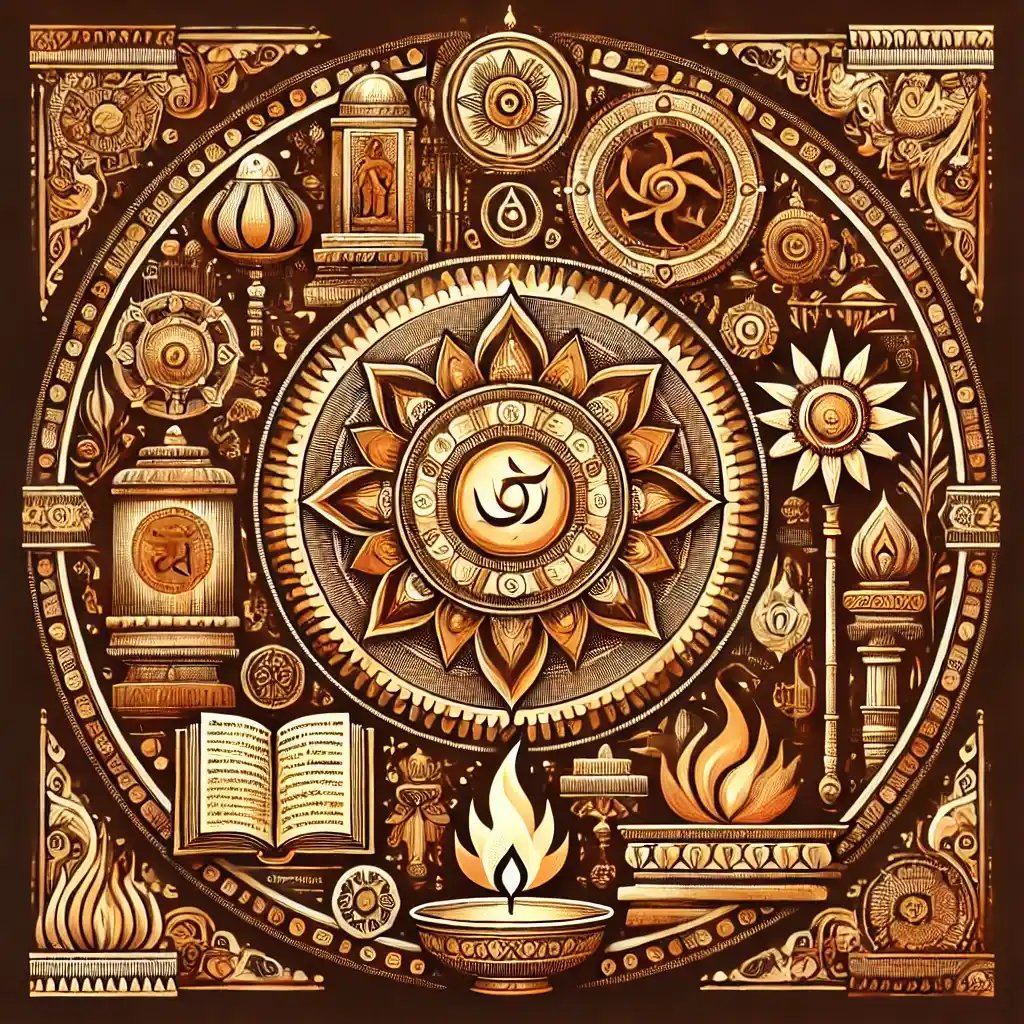
The Vedas
The Rigveda
The Ancient Vedic Text that Shaped Indian Spirituality
The Rigveda, one of the oldest known texts in the world, holds a profound place in the history of human spirituality and culture. Composed in Sanskrit, it is not just a collection of hymns but a treasure trove of early Vedic knowledge, spiritual philosophy, and poetic expression. The Rigveda forms the bedrock of Vedic tradition and has influenced religious, social, and cultural aspects of Indian life for thousands of years.
Origins and Composition
The Rigveda, believed to have been composed between 1500 and 1200 BCE, is the earliest of the four Vedas, the others being the Samaveda, Yajurveda, and Atharvaveda. It is traditionally attributed to ancient sages (rishis), who are said to have received this knowledge through divine revelation. The text is divided into ten books, called Mandalas, containing 1,028 hymns (Suktas) composed in praise of various deities. These hymns are written in the form of poetry, showcasing the rich linguistic and philosophical traditions of early Vedic society.
Structure of the Rigveda
The Rigveda is divided into ten Mandalas, each serving a specific purpose or theme:
First Mandala: This is the largest book and contains hymns addressing various deities, including Agni (the fire god) and Indra (the king of gods).
Second to Seventh Mandalas: These are known as the 'Family Books' as they are attributed to specific families of rishis. They include hymns dedicated to a range of deities, with a particular emphasis on Agni, Indra, and Soma.
Eighth Mandala: This book contains hymns of different families and is known for its complex and sometimes obscure hymns.
Ninth Mandala: This entire book is dedicated to the deity Soma, the ritual drink of the Vedic rituals.
Tenth Mandala: The last book includes philosophical hymns and the famous Nasadiya Sukta, or the Hymn of Creation, which explores the origins of the universe.
Key Themes and Deities
The Rigveda is centered around the worship of natural forces personified as gods. Some of the prominent deities mentioned are:
Agni: The fire god, who is seen as the mediator between humans and the gods. Many hymns are dedicated to Agni, reflecting his importance in Vedic rituals.
Indra: The king of gods, associated with thunderstorms and rain. Indra is often depicted as a heroic figure, slaying the demon Vritra and releasing the waters.
Soma: Both a deity and the sacred ritual drink, Soma is celebrated for its life-giving properties and its role in the Vedic sacrifices.
Varuna: The god of cosmic order and law, overseeing the moral conduct of humans and maintaining the balance of the universe.
Ushas: The goddess of dawn, who is praised for bringing light and dispelling darkness, symbolizing new beginnings and hope.
The hymns also explore themes of cosmology, metaphysics, and the human condition, offering insights into the early Vedic understanding of the universe and existence.
Philosophical Insights
Beyond its religious significance, the Rigveda is a rich source of philosophical inquiry. The Nasadiya Sukta in the Tenth Mandala is a striking example of early Indian cosmological thought. It questions the origins of the universe with an open-ended inquiry, reflecting a deep curiosity and skepticism:
“Who really knows? Who will here proclaim it? Whence was it produced? Whence is this creation? The gods came afterwards, with the creation of this universe. Who then knows whence it has arisen?”
This hymn is often cited as one of the earliest expressions of philosophical skepticism and inquiry, showing that the Vedic seers were not just priests performing rituals but also thinkers deeply engaged with the mysteries of existence.
Cultural and Ritualistic Significance
The Rigveda was not just a religious text but a manual for conducting Vedic rituals, which were central to the social and religious life of the early Vedic people. The hymns were recited during sacrifices and other rituals, serving as invocations to the gods and expressions of devotion and praise. The importance of sound and the precise pronunciation of the hymns was paramount, as it was believed that the correct intonation had the power to influence the natural and divine forces.
Preservation and Transmission
The Rigveda has been meticulously preserved through oral tradition, known as the 'Shruti' tradition, where the hymns were memorized and passed down orally from one generation to the next. This oral transmission ensured the preservation of the text in its original form, with very little variation over millennia. The written form of the Rigveda came much later, around the first millennium CE.
Rigveda's Influence on Indian Culture
The Rigveda's influence extends far beyond the realm of religion. Its hymns have shaped Indian literature, philosophy, and spiritual practices. The Vedic rituals described in the Rigveda laid the foundation for later Hindu rituals and practices, and its philosophical concepts influenced later Indian philosophical schools such as Vedanta and Samkhya.
The Rigveda's poetic form and content have also inspired countless works of Indian literature and art. Its hymns are recited in various religious ceremonies even today, underscoring its timeless relevance.
Conclusion
The Rigveda stands as a monumental work of early human civilization, offering a window into the spiritual, philosophical, and cultural life of ancient India. Its hymns, rich in metaphor and meaning, continue to resonate with readers and practitioners alike. As the oldest of the Vedas, it remains a foundational text in Hinduism and an enduring testament to the spiritual quest of humanity.

Explore the latest and most popular products available on Amazon, handpicked for your convenience! Whether you're shopping for tech gadgets, home essentials, fashion items, or something special, simply click the button below to view the product on Amazon. We’ve partnered with Amazon through their affiliate program, which means that if you make a purchase through this link, we may earn a small commission at no extra cost to you. This helps support our site and allows us to continue providing valuable content. Thank you for your support, and happy shopping!